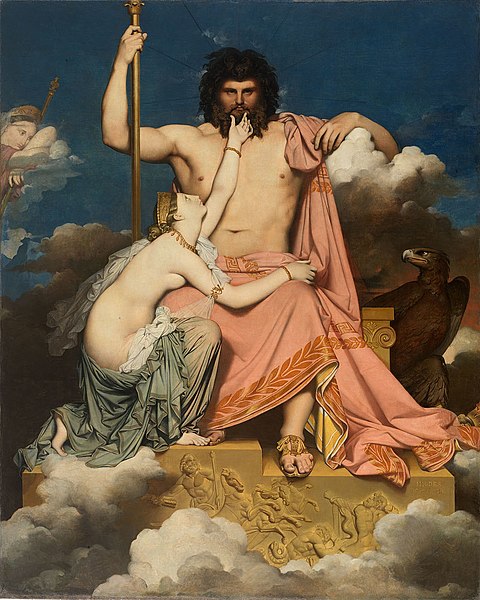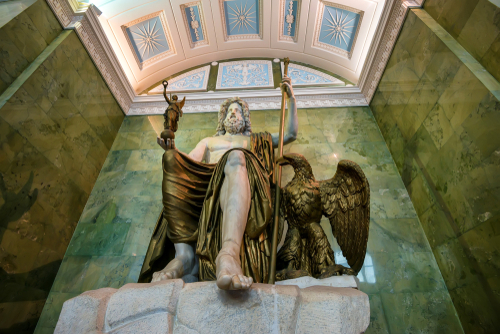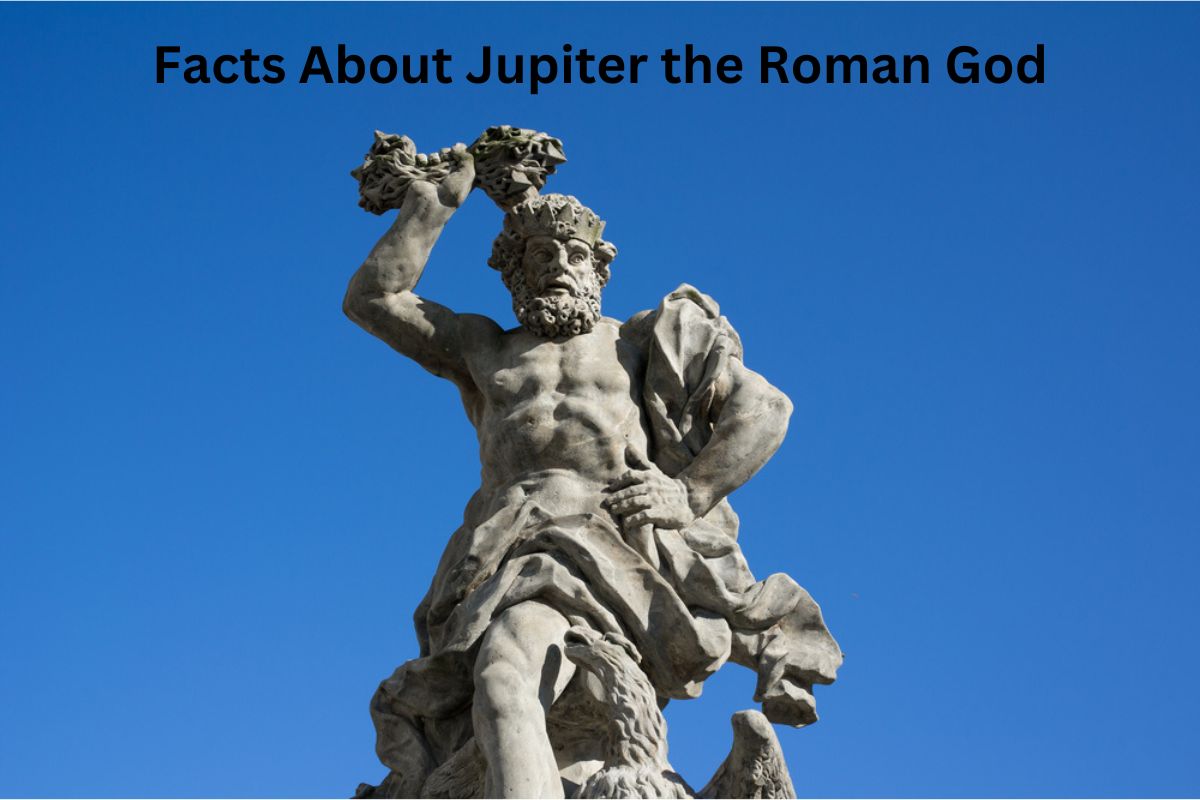Jupiter, also known as Iuppiter or Iovis in Latin, was the king of the gods and the ruler of the Roman pantheon. He held authority over the heavens and was revered as the god of the sky and thunder.
Jupiter played a central role in Roman mythology, leading his siblings in the war against the Titans and establishing himself as the supreme deity.
He was associated with justice, law, and order, and was depicted as a powerful figure, often shown holding a thunderbolt. Jupiter was married to his sister Juno, but his numerous affairs resulted in the birth of many divine and mortal children.
The Temple of Jupiter Optimus Maximus in Rome was a grand religious center dedicated to him. Additionally, the fifth planet from the Sun in our solar system bears his name, reflecting his enduring influence and significance in human culture.
Jupiter God Facts
1. King of the gods and ruler of the Roman pantheon
Jupiter held the highest position among the gods in the Roman pantheon. He was regarded as the supreme deity and held authority over all other gods and goddesses.
As the king of the gods, he was revered and worshiped by the Romans as the most powerful and influential figure in their mythology.

2. God of the sky and thunder
Jupiter’s dominion over the sky and thunder emphasized his role as a powerful deity. He was believed to control the heavens and had command over the elements.
Also Read: Facts About Venus the Roman Goddess
His most prominent symbol was the thunderbolt, a weapon associated with his control over lightning and storms. Jupiter’s power over the sky and thunder reinforced his status as a formidable and awe-inspiring god.
3. Son of Saturn and Ops
According to Roman mythology, Jupiter was the son of Saturn (equivalent to the Greek god Cronus) and Ops (also known as Rhea in Greek mythology). Saturn, fearing that one of his children would overthrow him, devoured them at birth.
Also Read: Roman God Neptune Facts
However, Ops managed to save Jupiter by hiding him and tricking Saturn into swallowing a stone instead. Jupiter was later raised on the island of Crete and eventually led his siblings in a rebellion against Saturn, resulting in their victory and Jupiter’s ascension as the new ruler of the gods.
4. Led his siblings in the Titanomachy
Jupiter played a pivotal role in the Titanomachy, a great war between the Titans, led by Saturn, and the younger generation of gods, known as the Olympians.
Jupiter, along with his siblings Neptune (Poseidon in Greek mythology) and Pluto (Hades in Greek mythology), fought against the Titans to overthrow their rule and establish a new order.
The Titanomachy lasted for ten years, and Jupiter’s leadership and strategic prowess were crucial in securing victory for the Olympians.
5. Associated with justice, law, and order
Jupiter was not only a powerful deity but also represented ideals of justice, law, and order. He was seen as the upholder of moral principles and the dispenser of justice. As the guardian of oaths and treaties, Jupiter ensured that contracts and agreements were honored.
The Romans believed that by offering prayers and sacrifices to Jupiter, they could seek his guidance in matters of law and justice.

6. Married to his sister Juno
Jupiter’s wife and queen of the gods was Juno (Hera in Greek mythology). Their marriage symbolized the union of power and authority. Juno was a prominent goddess associated with marriage, childbirth, and protectiveness.
However, Jupiter’s marital fidelity was questionable as he was notorious for his numerous affairs and dalliances with both mortal women and goddesses, often leading to conflict with Juno and resulting in the birth of many divine and mortal children.
7. Temple dedicated to him on the Capitoline Hill in Rome
Jupiter had a grand temple known as the Temple of Jupiter Optimus Maximus, situated on the Capitoline Hill in Rome. This temple was one of the most significant religious and political centers of ancient Rome.
It was a magnificent structure that housed a colossal statue of Jupiter, and it served as a focal point for important ceremonies, state rituals, and religious offerings dedicated to the god. The temple was an embodiment of Jupiter’s status as the protector and guardian of the Roman state.
8. Depicted as a mature man with a beard and often wearing a crown
In Roman art and iconography, Jupiter was typically portrayed as a mature and authoritative figure. He was depicted as a bearded man, symbolizing wisdom, power, and maturity.
Jupiter was often shown wearing a crown or a laurel wreath, signifying his status as the king of the gods. His regal appearance in artworks emphasized his role as the supreme deity and the ruler of the heavens.
9. Father of numerous gods and mortals
Jupiter had an extensive lineage of divine and mortal offspring.
He had many divine children, including Mars (Ares in Greek mythology), the god of war; Vulcan (Hephaestus in Greek mythology), the god of fire and craftsmanship; Mercury (Hermes in Greek mythology), the messenger of the gods; Minerva (Athena in Greek mythology), the goddess of wisdom and warfare; and Venus (Aphrodite in Greek mythology), the goddess of love and beauty, among others.
Additionally, Jupiter had several mortal children, born from his affairs with mortal women, who became legendary heroes, kings, and founders of noble lineages.
10. Jupiter, the fifth planet from the Sun, is named after him
The largest planet in our solar system, Jupiter, is named after the Roman god. Astronomers adopted the name “Jupiter” due to its size, significance, and prominence in the night sky.
The gas giant’s colossal stature and its immense gravitational influence align with the grandeur and power associated with the king of the gods. This celestial homage to Jupiter reinforces his enduring legacy and impact on human culture, both in mythology and scientific exploration.
